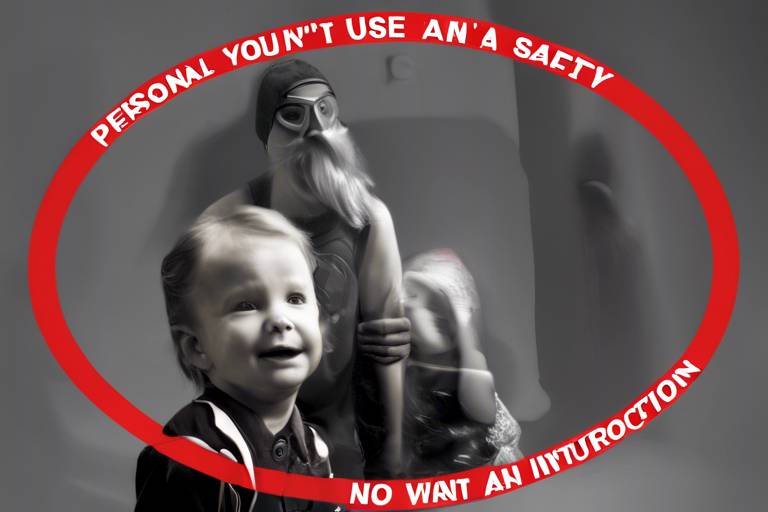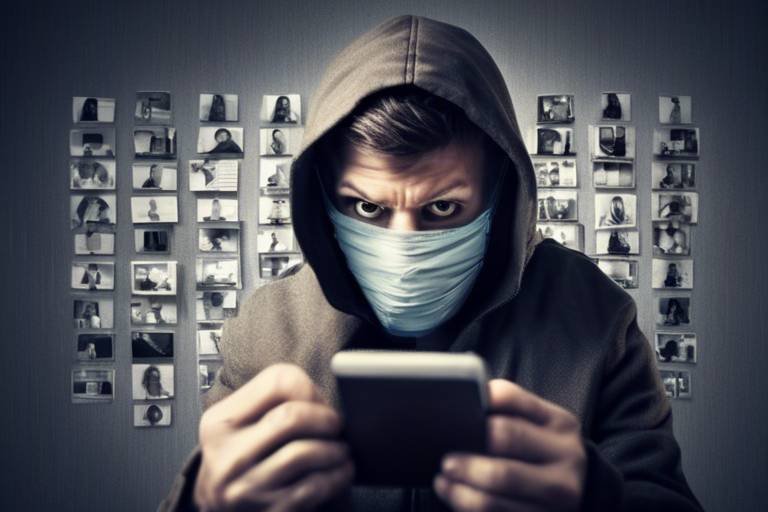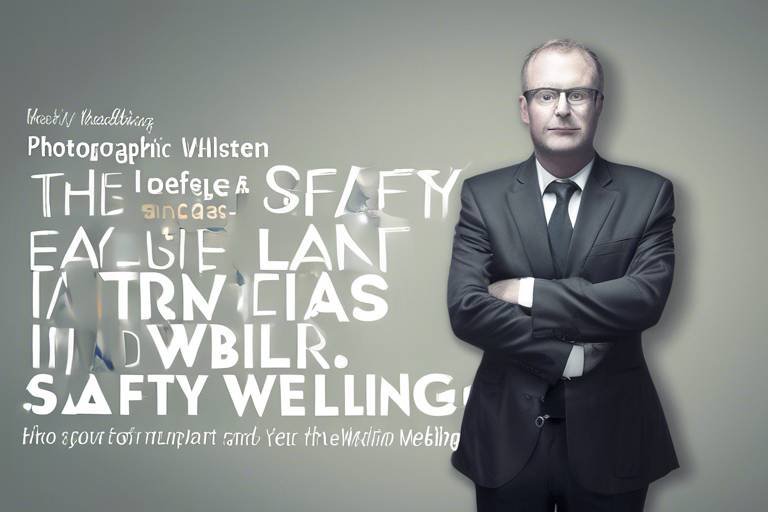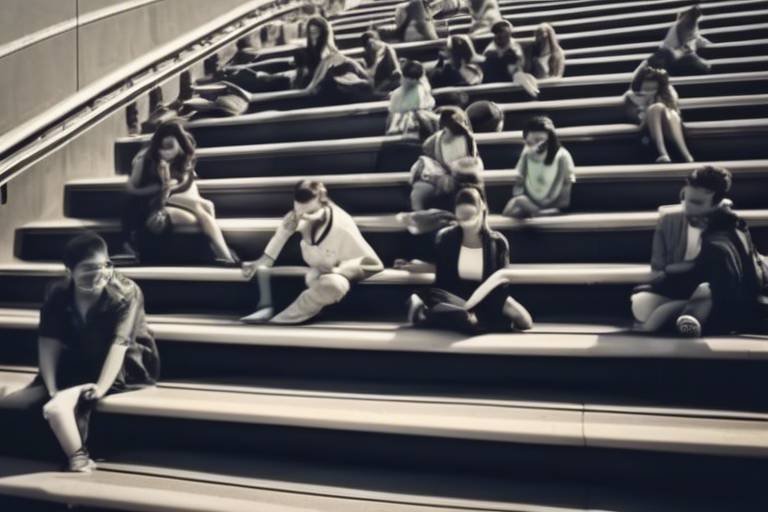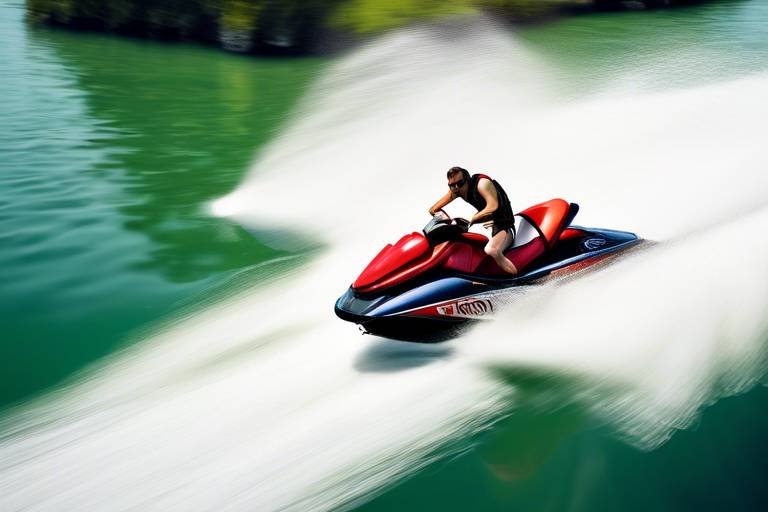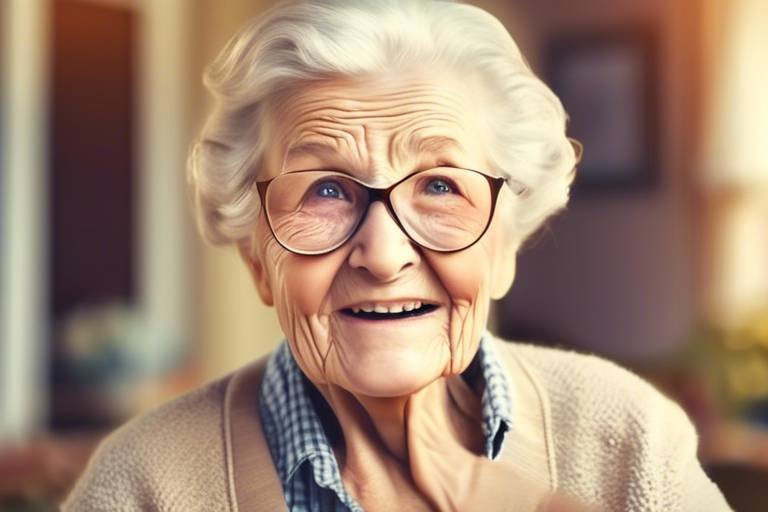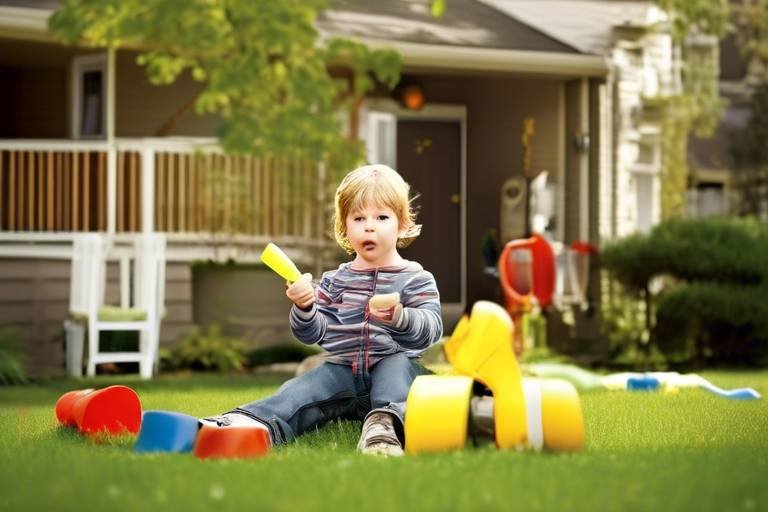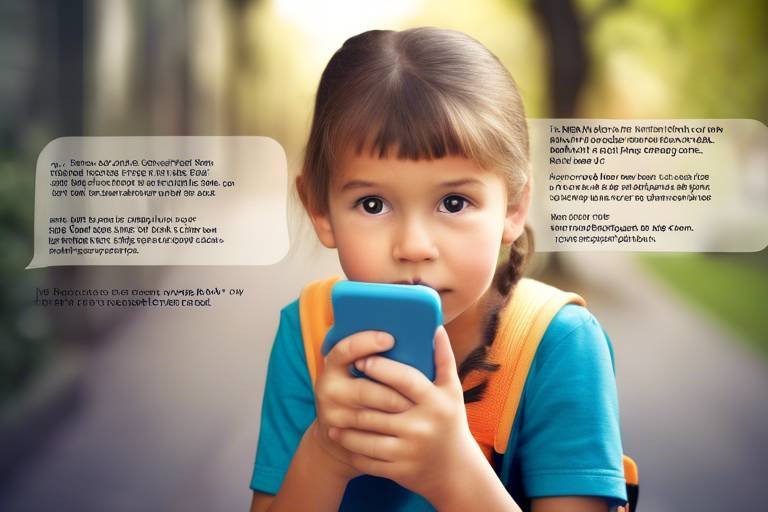Personal Safety 101 - An Introduction
In today's fast-paced world, personal safety is more important than ever. With the increasing number of threats and dangers lurking around every corner, it’s essential to equip ourselves with the knowledge and skills to protect ourselves. This article covers essential aspects of personal safety, including practical tips, awareness strategies, and self-defense methods that can help individuals safeguard themselves in various situations. Think of personal safety as your invisible shield; it’s not just about physical protection but also about mental preparedness and awareness. By being proactive, you can significantly reduce your risk of becoming a victim.
Personal safety isn't just a buzzword; it's a vital component of our daily lives. Whether you're walking home at night, traveling to a new city, or even just running errands, understanding how to navigate potential dangers can make a world of difference. It’s about being aware of your surroundings, knowing how to react in different situations, and having a plan in place. Just like you wouldn’t step onto a battlefield without armor, you shouldn’t step into the world without a personal safety strategy. This article aims to empower you with the tools and insights you need to feel confident and secure in your everyday life.
Before diving into specific techniques and strategies, let’s take a moment to reflect on what personal safety truly means. It’s not just about avoiding dangerous situations; it’s about fostering a mindset of awareness and readiness. Imagine walking through a crowded marketplace. You see people bustling about, but do you notice the man lingering too long by the entrance? Or the group of individuals acting suspiciously? Developing a keen sense of observation can be your first line of defense. By understanding the dynamics of your environment, you can better prepare yourself for whatever may come your way.
Moreover, the importance of personal safety extends beyond individual protection. It’s about creating a safer community for everyone. When individuals are aware and proactive about their safety, it fosters a culture of vigilance and responsibility. We all share the same space, and by looking out for one another, we can significantly reduce risks and enhance our collective security. So, let’s embark on this journey together to explore the various facets of personal safety, starting with the foundation of understanding our surroundings and the potential threats we may face.
- What is personal safety?
Personal safety refers to the measures and practices individuals adopt to protect themselves from harm in various situations.
- Why is situational awareness important?
Situational awareness helps you recognize potential threats and react effectively, which can prevent dangerous situations from escalating.
- What are some basic self-defense techniques?
Basic self-defense techniques include simple moves like blocking, striking, and escaping holds, which can be learned through practice.
- How can I create a personal safety plan?
A personal safety plan involves identifying emergency contacts, safe routes, and strategies for various situations to ensure preparedness.

Understanding Personal Safety
Personal safety is not just a buzzword; it's a vital aspect of our daily lives that we often take for granted. Think about it—how many times have you walked down a street lost in thought, oblivious to your surroundings? This lack of awareness can put you at risk. Personal safety encompasses a range of practices and measures that individuals can adopt to protect themselves from harm. It goes beyond just physical protection; it involves a mindset and a set of skills that can help you navigate through various situations safely.
Being aware of your surroundings is the first step in ensuring your personal safety. It’s like having a sixth sense that helps you stay alert to potential dangers. Imagine you're in a crowded market; your ability to notice unusual behavior or a sudden change in the atmosphere could be the difference between safety and danger. This is where situational awareness comes into play. It’s about being conscious of your environment and understanding the dynamics at play. By honing this skill, you can significantly reduce your risk of encountering threats.
Moreover, personal safety is not solely about reacting to threats; it’s also about prevention. Understanding the importance of personal safety means recognizing that you have the power to influence your own safety. This includes everything from choosing well-lit paths to avoiding isolated areas, especially at night. You might think, “I’ve never had an issue before, so why worry?” But just like wearing a seatbelt, it’s better to be safe than sorry. Having a proactive approach can empower you to make smart decisions that keep you out of harm's way.
In addition, personal safety practices can vary based on location and context. For instance, what feels safe in your neighborhood might not be the same in an unfamiliar city. also involves adapting to different environments and knowing how to assess risks accordingly. This adaptability is crucial because threats can manifest in various forms, from environmental hazards to social interactions. By being informed and prepared, you can navigate through life with greater confidence and security.
To wrap it up, personal safety is a multifaceted concept that requires continual awareness and proactive measures. By recognizing the importance of being alert and informed, you can significantly enhance your safety in everyday life. Remember, it’s not just about avoiding danger; it’s about creating a lifestyle where safety is prioritized. So, the next time you step out, take a moment to scan your surroundings and trust your instincts. Your safety is worth it!
- What is personal safety? Personal safety refers to the measures and practices individuals adopt to protect themselves from harm in various situations.
- Why is situational awareness important? Situational awareness helps you stay alert to your surroundings, enabling you to recognize potential threats and react effectively.
- How can I improve my personal safety? You can improve your personal safety by being aware of your environment, trusting your instincts, and developing a personal safety plan.

Situational Awareness
Situational awareness is like having a superpower in your everyday life. It’s not just about being alert; it’s about being attuned to your surroundings, understanding the dynamics of the environment, and recognizing potential threats before they escalate. Imagine walking into a crowded café. Instead of being lost in your phone, you take a moment to look around. You notice the exits, the people, and even the unusual behavior of someone sitting alone in the corner. This ability to observe and interpret your environment can be the difference between safety and danger.
So, how do you cultivate this essential skill? First, it’s about training your mind. You can start by practicing mindfulness techniques. This means being present in the moment and consciously observing what’s happening around you. Try to engage your senses: what do you hear? What do you see? Smell? The more you practice, the sharper your awareness becomes. You might consider setting small daily goals, such as identifying five things you didn’t notice before while walking down the street. This simple exercise can enhance your awareness significantly over time.
Another important aspect of situational awareness is understanding body language and environmental cues. People often communicate more through their actions than their words. For instance, if someone is pacing back and forth with a furrowed brow, they might be anxious or agitated. Similarly, if a group of people is huddled together, it could indicate that something is happening that’s worth your attention. By learning to read these signs, you can better assess whether a situation is safe or if it warrants further caution.
Moreover, your environment plays a crucial role in your situational awareness. It’s essential to recognize safe and unsafe areas. For instance, well-lit streets and populated places are generally safer than dark alleys or secluded areas. Here’s a quick table to illustrate some common safe versus unsafe environments:
| Safe Environments | Unsafe Environments |
|---|---|
| Busy shopping areas | Isolated parking lots |
| Parks during the day | Deserted streets at night |
| Well-lit public transport stations | Dimly lit alleyways |
| Cafés with many patrons | Abandoned buildings |
Trusting your instincts is another critical component of situational awareness. If something feels off, it probably is. Your gut feelings are often based on subconscious observations that you might not even be aware of. For example, if you’re walking alone and feel an inexplicable sense of unease, it’s wise to heed that feeling. You might choose to change your route, enter a store, or call a friend. Remember, it’s better to be cautious than to put yourself in a potentially dangerous situation.
In essence, developing situational awareness is about practice and vigilance. It’s about transforming your everyday routine into a conscious effort to observe and interpret your surroundings. By honing this skill, you empower yourself to react effectively in various situations, ensuring your safety and well-being.
- What is situational awareness? Situational awareness is the ability to identify, process, and comprehend critical elements of information about what is happening with regards to the environment and potential threats.
- How can I improve my situational awareness? You can improve your situational awareness through mindfulness practices, observing body language, and understanding your environment.
- Why is trusting my instincts important? Trusting your instincts helps you to respond to potential threats based on your subconscious observations and feelings, which can be crucial for your safety.

Identifying Potential Threats
When it comes to personal safety, the ability to identify potential threats can make all the difference. Think of it as having a sixth sense; it’s not just about being paranoid but rather about being proactive and aware. The world around us is filled with cues—some subtle, some glaring—that can indicate danger. By honing your skills in recognizing these signs, you can significantly reduce your risk of encountering harm.
One of the first steps in identifying potential threats is understanding body language. People often communicate more through their actions than their words. For instance, if someone is standing too close for comfort or has a tense posture, it might be a sign of aggression or intent to harm. Likewise, if someone is avoiding eye contact or fidgeting excessively, they may be hiding something or feeling anxious. Being attuned to these cues can provide vital information about a person's intentions.
Additionally, environmental cues play a crucial role in threat identification. Pay attention to your surroundings—are there places that seem poorly lit or deserted? Is there an unusual amount of foot traffic in an area that typically feels safe? Trust your gut feelings if something feels off. It’s important to be aware of safe and unsafe areas in your environment, which can be influenced by time of day, local events, or even weather conditions. For example, a park that feels inviting during the day can turn into a different space entirely after sunset.
To help you better understand how to assess your surroundings, consider the following environmental awareness techniques:
- Always keep your head up and your phone away when walking in public spaces.
- Make a mental note of exits and safe spots when entering unfamiliar areas.
- Observe the behavior of those around you; are they acting normally?
Another key aspect of identifying threats is trusting your instincts. Your intuition is a powerful tool that can help you gauge when something is not quite right. Have you ever walked into a room and immediately felt uneasy? That gut feeling is your brain processing information faster than you can consciously understand. If your instincts are telling you to leave or be cautious, it's crucial to listen. Ignoring these feelings can lead to regrettable situations.
In summary, identifying potential threats is about being observant and trusting your instincts. By understanding body language, paying attention to environmental cues, and listening to your gut, you can enhance your personal safety. Remember, it’s not about living in fear; it’s about living smart and being prepared. The more you practice these skills, the more instinctive they will become, allowing you to navigate the world with greater confidence and security.
Q: How can I improve my situational awareness?
A: Start by practicing mindfulness in your daily activities. Regularly check your surroundings, and try to notice details you might typically overlook. This can include the people around you, their behaviors, and the environment itself.
Q: What should I do if I feel threatened?
A: If you feel threatened, trust your instincts and remove yourself from the situation if possible. If you cannot escape, look for ways to attract attention or seek help, such as calling 911 or using a personal alarm.
Q: Are there specific signs of a potential threat I should look for?
A: Yes, some common signs include aggressive body language, unusual behavior, or someone loitering in a way that seems out of place. Always be aware of your surroundings and trust your gut feelings.

Environmental Awareness
Being aware of your surroundings is not just a good habit; it’s a crucial skill for personal safety. Think of it as tuning into a radio station—if you’re not paying attention, you might miss important signals that could help you navigate through potential dangers. Environmental awareness means being conscious of the people, places, and situations around you. It’s about recognizing that not every environment is safe and that some areas may harbor risks that you need to be prepared for.
Imagine walking down a street late at night. The first thing you should do is assess your surroundings. Are there well-lit areas nearby? Are there people around, and do they seem trustworthy? These observations can make a significant difference in your safety. Here are a few key points to consider when developing your environmental awareness:
- Lighting: Always choose well-lit paths, especially at night. Dark areas can conceal potential threats.
- People: Pay attention to the body language of those around you. Are they acting suspiciously? Trust your gut feelings.
- Exits: Know your exits. In any environment, whether it’s a public place or your workplace, be aware of possible escape routes in case of an emergency.
By practicing these techniques, you can start to build a mental map of your environment. This awareness not only boosts your confidence but also enhances your ability to respond to unexpected situations. Consider it like being a detective in your own life; you gather clues and evidence about your surroundings, which helps you make informed decisions.
Moreover, environmental awareness extends beyond just personal safety. It involves understanding the community you live in, recognizing safe and unsafe areas, and knowing when to avoid certain neighborhoods or situations altogether. For instance, if you notice a pattern of crime in a specific area, it’s wise to adjust your routines accordingly. You wouldn’t want to stroll through a neighborhood that’s been flagged for high crime rates, right?
In essence, enhancing your environmental awareness is about creating a proactive mindset. It’s about being alert and ready to react when necessary. Just like a hawk soaring high above, scanning the ground for movement, you too should keep your eyes peeled for anything that seems out of the ordinary. Remember, the more aware you are, the safer you’ll be.
Q: How can I improve my environmental awareness?
A: Start by practicing mindfulness in your daily activities. Pay attention to your surroundings, notice changes, and think critically about the people and places you encounter.
Q: What should I do if I feel unsafe in my environment?
A: Trust your instincts. If something feels off, remove yourself from the situation if possible. Seek help from authorities or trusted individuals if necessary.
Q: Are there specific tools I can use to enhance my awareness?
A: Yes! Consider using apps that provide alerts about crime in your area, or carry personal safety devices like a whistle or pepper spray for emergencies.

Trusting Your Instincts
When it comes to personal safety, one of the most powerful tools you have is your intuition. can be a game-changer in potentially dangerous situations. Think of your gut feelings as an internal alarm system, finely tuned over years of experience and observation. Have you ever walked into a room and felt a sudden chill, or sensed that something just wasn’t right? That’s your instinct kicking in, and ignoring it could lead to trouble.
Many people underestimate the importance of these feelings, often brushing them off as paranoia or overreacting. However, it's crucial to recognize that our instincts have evolved as a survival mechanism. They can alert us to danger before our conscious mind even processes it. For instance, if you’re walking alone at night and notice someone following you, your body might react with a rush of adrenaline, prompting you to evaluate the situation more closely. This is your instinct urging you to take action.
So, how do you cultivate this instinctive awareness? Start by being present in your environment. Engage your senses—notice the sounds around you, the people you encounter, and the general vibe of a place. When you’re in tune with your surroundings, you’re more likely to pick up on subtle cues that something might be off. For example, if a stranger approaches you with an overly friendly demeanor in a secluded area, your instinct might tell you to be cautious. It’s always better to err on the side of caution.
Moreover, trusting your instincts doesn’t mean acting irrationally; it’s about finding a balance. If something feels off, take a moment to assess the situation. Ask yourself questions like:
- What exactly is making me uneasy?
- Are there any specific behaviors that seem suspicious?
- How can I safely remove myself from this situation?
By analyzing your feelings, you can make informed decisions rather than simply reacting out of fear. For instance, if you’re in a crowded area and feel uncomfortable, consider moving to a more populated space or finding a friend to walk with you. Remember, your safety is paramount, and it’s always okay to prioritize it over social niceties.
In summary, trusting your instincts is about listening to that inner voice and respecting the feelings it brings. It’s an essential aspect of personal safety that can guide you in navigating complex situations. Just like a compass pointing north, your instincts can lead you away from danger if you’re willing to pay attention and take action. So next time you feel that little twinge of unease, don’t dismiss it—embrace it as your body’s way of keeping you safe.

Reacting to Threats
When it comes to personal safety, knowing how to react to potential threats is not just a skill—it's a lifesaver. Imagine you're walking down a dimly lit street, and you notice someone following you closely. What do you do? Your reaction can make all the difference between a safe escape and a dangerous encounter. It's essential to cultivate a mindset that prepares you for these situations. The first step is to remain calm and composed. Panic can cloud your judgment and lead to poor decisions. Take a deep breath and assess the situation.
One effective strategy is to create distance between yourself and the perceived threat. If someone is following you, consider changing your route. Head towards a busy area, a store, or a public space where you can find help. This is not just about escaping; it's about strategically positioning yourself in a safer environment. In addition, make your presence known. If you feel uncomfortable, don't hesitate to express it. You might shout something like, "Leave me alone!" or "Help!" This can deter a potential attacker and draw attention to your situation.
Another important aspect of reacting to threats is understanding the fight or flight response. This natural reaction can be triggered by fear, and it prepares your body to either confront a danger or escape from it. However, it’s crucial to evaluate which response is appropriate for the situation. For instance, if you feel cornered and there’s no escape, your best bet might be to fight back. Learning some basic self-defense techniques can empower you to act decisively when the moment calls for it.
In situations where you must engage, aim for vulnerable points on an attacker’s body, such as the eyes, nose, or groin. These areas can incapacitate an assailant, giving you a chance to escape. Remember, your goal is not to win a fight but to create an opportunity to get away. Here’s a quick table summarizing some effective responses:
| Situation | Recommended Action |
|---|---|
| Being followed | Change your route and head towards a crowded area. |
| Feeling threatened | Shout for help and make your presence known. |
| Cornered by an attacker | Use self-defense techniques targeting vulnerable areas. |
Moreover, it’s vital to have a plan. Think of it like a fire drill; rehearsing your reactions can make them second nature. Discuss scenarios with friends or family and practice how you would respond. This not only builds confidence but also sharpens your instincts. If you find yourself in a threatening situation, remember that your safety is your top priority. Trust your gut feelings, and don’t hesitate to take action if something feels off.
Finally, always be prepared to report any suspicious behavior to authorities. Whether it’s calling the police or alerting a nearby security guard, taking action can help prevent harm not just to yourself but to others as well. Reacting appropriately in threatening situations is about being proactive rather than reactive. Equip yourself with knowledge, stay alert, and always have a plan in place to ensure your personal safety.
- What should I do if I feel threatened while walking alone?
Stay calm, change your route to a busier area, and don’t hesitate to shout for help. - How can I practice self-defense techniques?
Consider enrolling in a self-defense class or practicing with a friend. - Is it okay to confront an attacker?
Only if you feel confident and it’s safe to do so; otherwise, focus on escaping.

Self-Defense Techniques
When it comes to personal safety, are not just about learning how to throw a punch or kick. Instead, they represent a mindset and a set of skills that can empower individuals to protect themselves in various situations. Think of self-defense as a toolbox; each technique is a tool that you can use to navigate through potentially dangerous encounters. Whether you're walking home late at night or finding yourself in a crowded space, having these techniques at your disposal can significantly boost your confidence and preparedness.
One of the most important aspects of self-defense is understanding the principles behind it. It's not just about brute strength; it's about using your body efficiently and effectively. For instance, leverage and timing can often outweigh size and strength. This means even if you’re smaller or not as strong as your attacker, you can still defend yourself successfully. The key is to remain calm, focused, and aware of your surroundings. Practice is essential, so consider enrolling in a self-defense class to learn these techniques under the guidance of a professional.
Now, let's dive into some basic self-defense moves that can be beneficial for anyone:
- The Palm Strike: This technique is simple yet effective. Instead of using your fist, use the heel of your palm to strike an attacker’s nose or chin. This can cause disorientation and give you a chance to escape.
- The Knee Strike: If you find yourself in close proximity to an assailant, a knee strike to the groin can be a game-changer. It’s unexpected and can incapacitate an attacker, allowing you to flee.
- The Elbow Strike: In close quarters, your elbows are powerful tools. Aim for the attacker’s head or body to create space for your escape.
In addition to physical techniques, there are various self-defense tools that can enhance your personal safety. These tools serve as an extension of your self-defense skills and can provide an extra layer of protection. Here are a few popular options:
- Pepper Spray: This is a widely used self-defense tool that can incapacitate an attacker temporarily, giving you time to escape.
- Personal Alarms: These devices emit a loud noise when activated, which can draw attention and scare off potential threats.
- Self-Defense Keychains: Many keychains are designed as self-defense tools, featuring pointed ends or other mechanisms that can be used in a pinch.
When using any self-defense tool, it’s crucial to familiarize yourself with its operation and practice using it in a safe environment. Remember, the goal of self-defense is not to engage in a fight but to create an opportunity to escape and seek safety.
In conclusion, incorporating self-defense techniques into your personal safety strategy is a smart move. Not only do they provide you with practical skills, but they also instill a sense of confidence and awareness that can be invaluable in critical situations. By understanding the principles of self-defense and practicing regularly, you can equip yourself with the tools needed to navigate through life’s uncertainties with greater assurance.
Q: Do I need to be physically fit to learn self-defense?
A: Not at all! Self-defense techniques can be learned by individuals of all fitness levels. The focus is on technique and strategy rather than physical strength.
Q: How often should I practice self-defense techniques?
A: Regular practice is key. Aim for at least once a week to keep your skills sharp and your confidence high.
Q: Are self-defense classes safe?
A: Yes, reputable self-defense classes prioritize safety and provide a controlled environment for learning. Instructors typically emphasize proper techniques to avoid injury.

Basic Self-Defense Moves
When it comes to personal safety, knowing some can be a game changer. Think of self-defense as a toolkit; each move is a tool that can help you in a pinch. The beauty of these techniques is that they are not only easy to learn but can also be practiced by anyone, regardless of age or fitness level. Remember, the goal is not to become a martial arts master but to gain the confidence and skills to protect yourself in a dangerous situation.
Let’s dive into a few essential moves that can empower you. First up, we have the palm strike. This move is simple yet effective. Instead of trying to punch with your fist, which can lead to injury, use the heel of your palm to strike upward into an attacker’s nose or chin. This can create enough space for you to escape. It’s all about using your body’s natural mechanics to your advantage.
Next, consider the knee strike. If an assailant is close, driving your knee into their groin can be a highly effective way to incapacitate them momentarily. This move can be particularly useful because it requires minimal strength and can be executed quickly. Just imagine it as a swift upward motion, like a bird taking flight to escape a predator. In this case, you’re the bird, and your freedom is paramount.
Another fundamental technique is the elbow strike. This is especially useful in close quarters. By bringing your elbow down sharply onto an attacker’s face or ribs, you can create a significant impact. The elbow is one of the hardest parts of your body, making it an effective weapon in self-defense. Think of it as your body’s built-in hammer, ready to strike when needed.
Now, let’s not forget about the importance of awareness and escape. Often, the best self-defense move is to avoid confrontation altogether. If you can, always look for an opportunity to escape rather than engage. This can mean using your voice to draw attention to the situation or finding a safe route away from danger. Remember, the goal is to get to safety, not to prove your strength.
To wrap things up, practicing these moves regularly can help you react instinctively in high-pressure situations. Consider enrolling in a self-defense class to refine your skills further and gain hands-on experience. Just like any other skill, the more you practice, the more confident you’ll become. And who knows? You might just find that you enjoy it!
- Q: Do I need to be fit to learn self-defense?
A: Absolutely not! Self-defense techniques can be adapted to fit anyone's physical abilities. - Q: How often should I practice these moves?
A: Regular practice is key. Aim for at least once a week to keep your skills sharp. - Q: Can self-defense techniques guarantee my safety?
A: While they can increase your chances of escaping a dangerous situation, there are no guarantees. Awareness and avoidance are equally important. - Q: Where can I learn more self-defense techniques?
A: Many local community centers offer self-defense classes, and there are numerous online resources available as well.

Self-Defense Tools
When it comes to personal safety, having the right can make a significant difference in how effectively you can protect yourself. Just like a knight wouldn't go into battle without their armor, you shouldn't venture out without a few essential tools at your disposal. These tools not only offer a sense of security but also empower you to take action if the need arises. So, what are some of the most effective self-defense tools you can consider?
First on the list is pepper spray. This compact device is easy to carry and can incapacitate an attacker long enough for you to escape. When using pepper spray, aim for the attacker's face, especially the eyes, to maximize its effectiveness. It's crucial to check the local laws regarding the use of pepper spray, as regulations can vary from place to place.
Another handy tool is a personal alarm. These small devices emit a loud sound that can attract attention and deter an attacker. The beauty of a personal alarm lies in its simplicity; all you need to do is pull a pin or press a button, and you can create a commotion that might scare off a would-be assailant. Plus, they’re often small enough to fit on your keychain, making them incredibly convenient to carry.
For those who feel comfortable with a bit more weight, a tactical flashlight can serve dual purposes. Not only can it illuminate dark areas, but it can also be used to temporarily blind an attacker—giving you a crucial moment to escape. Many tactical flashlights are designed to be durable and can withstand rough handling, making them a reliable choice for self-defense.
Additionally, consider carrying a self-defense keychain. These small, often discreet tools can come in various forms, from knuckle duster-like designs to pointed spikes that can be used to jab an assailant. While they may look like ordinary keychains, they can pack a punch when needed. However, it’s essential to familiarize yourself with how to use them properly to ensure you can react effectively in a stressful situation.
Lastly, don't overlook the importance of self-defense classes. While not a physical tool, the knowledge and skills gained from these classes can be invaluable. Many local community centers or martial arts studios offer courses tailored for beginners, teaching you how to use your tools effectively and how to defend yourself in various situations.
In summary, equipping yourself with the right self-defense tools can provide a significant advantage in ensuring your personal safety. Whether it's pepper spray, a personal alarm, or a tactical flashlight, each tool serves a unique purpose that can help you navigate potentially dangerous situations. Remember, the best tool you can have is your awareness and preparedness—so stay alert, stay safe, and always trust your instincts!
- What is the best self-defense tool for beginners?
For beginners, pepper spray is often recommended due to its ease of use and effectiveness. It requires minimal training and can be carried discreetly. - Are self-defense tools legal everywhere?
No, the legality of self-defense tools varies by location. Always check local laws before purchasing or carrying any self-defense items. - How can I learn to use self-defense tools effectively?
Consider taking a self-defense class or workshop that covers the use of these tools. Practical training can significantly enhance your confidence and skills.

Creating a Personal Safety Plan
In today's unpredictable world, having a personal safety plan is not just wise; it's essential. Think of it as your safety net, a well-thought-out strategy that can help you navigate through potential dangers. Just like you wouldn't leave home without your keys, you shouldn't step out without having a plan in place. A solid safety plan not only prepares you for emergencies but also instills a sense of confidence and control in various situations.
To create an effective personal safety plan, start by identifying your emergency contacts. These are the people you can rely on during a crisis—friends, family, or even neighbors who live nearby. Make sure to keep their contact information readily accessible, perhaps in your phone or a small note in your wallet. Remember, in a moment of panic, having quick access to this information can make all the difference.
Next, consider your safe routes and destinations. Whether you're walking home from work or heading to a friend's house, knowing the safest path can significantly reduce your risk. Familiarize yourself with your neighborhood and note areas that are well-lit and populated, as well as those that may be less safe, especially at night. You might even want to create a map of your safe routes, highlighting key landmarks and potential escape routes. This can serve as a quick reference if you ever feel uneasy.
In addition to routes, think about your safe spaces. These are locations where you can go if you feel threatened—places like a busy café, a store, or even a police station. Make a mental note of these spots and plan how to get there quickly if needed. It's also beneficial to have a few emergency phrases ready that you can use if you need help. Something as simple as, "I need assistance," can alert others to your situation without drawing unwanted attention.
Another vital component of your personal safety plan is practicing self-defense techniques. Familiarizing yourself with basic moves can empower you to react confidently in a threatening situation. Consider enrolling in a self-defense class where you can learn practical skills while meeting others who share your interest in personal safety. Remember, the goal isn't to become a martial arts expert but to equip yourself with the knowledge and skills to protect yourself if necessary.
Lastly, it's crucial to regularly review and update your personal safety plan. Life changes, and so do the potential risks you may face. Set aside time every few months to reassess your emergency contacts, safe routes, and self-defense skills. By staying proactive, you ensure that your plan remains relevant and effective. After all, just like you wouldn’t drive a car without checking the oil, you shouldn’t rely on a safety plan that’s outdated.
In summary, creating a personal safety plan is a proactive step toward ensuring your well-being. By being prepared and aware, you can navigate the world with greater confidence and peace of mind. So, take the time to craft your plan today; it’s an investment in your safety that you won't regret.
- What should I include in my personal safety plan? Your plan should include emergency contacts, safe routes, self-defense techniques, and safe spaces.
- How often should I review my personal safety plan? It's best to review your plan every few months to ensure it's up to date.
- Can self-defense classes really help? Yes! They can boost your confidence and teach you valuable skills for protecting yourself.
- What if I feel uncomfortable creating a safety plan? Consider reaching out to friends or local organizations for assistance and resources.
Frequently Asked Questions
- What is personal safety?
Personal safety refers to the measures and practices individuals can adopt to protect themselves from harm. It involves being aware of your surroundings, understanding potential risks, and knowing how to respond effectively in dangerous situations.
- Why is situational awareness important?
Situational awareness is crucial because it helps you recognize potential threats before they escalate. By staying alert and observing your environment, you can identify warning signs and avoid dangerous situations, much like a deer sensing danger in the woods.
- How can I identify potential threats?
You can identify potential threats by paying attention to body language and environmental cues. Look for unusual behavior, people loitering in suspicious ways, or changes in the atmosphere that make you feel uneasy. Trust your gut—if something feels off, it probably is!
- What should I do if I feel threatened?
If you feel threatened, trust your instincts and remove yourself from the situation if possible. If you can’t escape, use self-defense techniques or tools at your disposal, like pepper spray or a personal alarm, to protect yourself.
- What are some basic self-defense moves I can learn?
Some basic self-defense moves include striking vulnerable areas (like the eyes or groin), using your elbows and knees for close combat, and learning to break free from grabs or holds. Practicing these moves can boost your confidence and readiness.
- What self-defense tools should I carry?
Consider carrying tools like pepper spray, personal alarms, or tactical pens. These tools can provide an extra layer of safety, and knowing how to use them effectively can make a significant difference in a threatening situation.
- How do I create a personal safety plan?
To create a personal safety plan, start by identifying emergency contacts, safe routes, and meeting points. Consider scenarios you might encounter and outline steps to take in each situation. Regularly review and update your plan to ensure its effectiveness.

